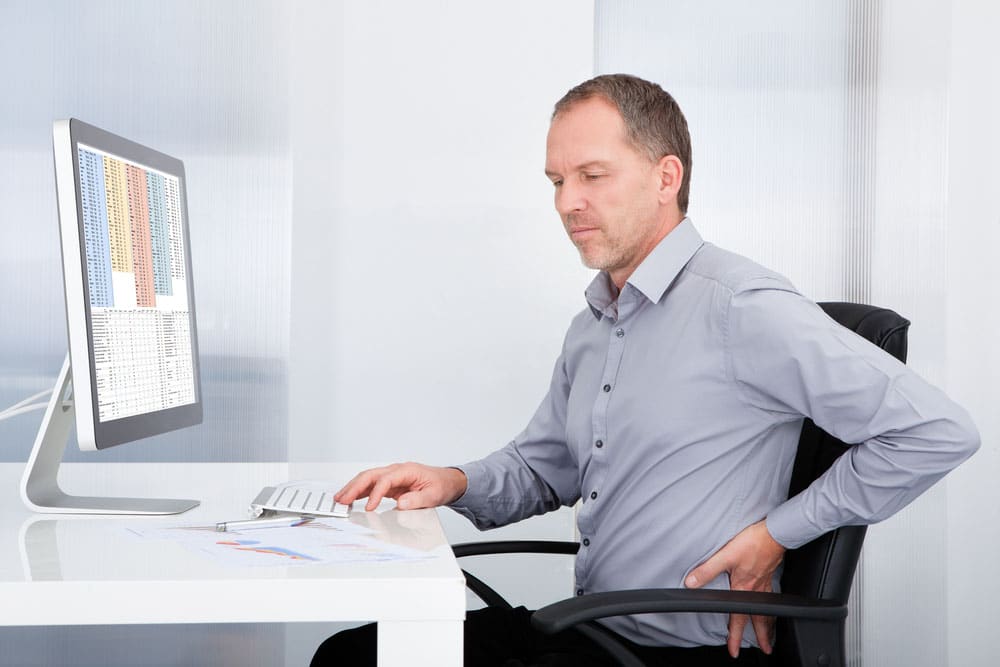
Many posture problems can be cured with the right office equipment and correct setup of equipment.
Pain caused by posture is caused by small, repetitive stresses on one or a few muscles. Over time, these muscles become fatigued and cause conditions, such as bursitis or tendinopathy. This wearing of the muscles can cause permanent disability that can be costly to individuals, companies and the country.
Prior the COVID-19 pandemic, many workplaces will have Health and Safety measures that are required by law to minimise the impact of improper workstation setup. However, many will now be working from home with makeshift workstations, unknownly causing posture problems, pain and, possibly, financial issues in the medium term.
Here’s how you can adapt your home workspace to be more ergonomic and reduce your pain.
Office Chair
Your office chair is one of the biggest causes of pain, especially in the back and the neck. An ergonomic chair has the ability to change according to the user. Your office chair should be shaped to your spinal curve and the height should be adjusted so your feet can rest flat on the floor. If your feet cannot reach the floor, your employer should provide a footstool.
Computer Screens
Your computer screen should be directly in front of you to avoid stressing the muscles on one side of your neck. The screen should be approximately an arm’s length away from your body and at the same height as your eyes. Most pain occurring in the neck and eyes is from stretching the neck to read the screen. Adjust it accordingly so your head stays central to your body.
Keyboard & Mouse
Your keyboard and mouse should be directly in front of your screen to avoid any awkward angles when typing. When you use your mouse or keyboard, your wrist and elbows should be parallel to the floor.
The mouse is a common cause of pain because of the repetitive nature of the device and is the most common source of RSI pain. You should avoid using the mouse where possible. Try creating keyboard shortcuts or altering the sensitivity of the mouse to a higher setting to reduce your usage. If you are using a mouse-intensive program, such as Photoshop, then try alternating between hands or investing in a vertical mouse.
While using either device, it may be worthwhile to invest in a mouse mat or desk mat that provides cushioning support for your wrists. This is for desks that have a particularly hard edge.
Desk
The underneath of your desk should be clutter free and should allow ample room for your knees and thighs. If it is too low, then try raising it up with blocks, such as books). If it’s too high, then raise the height of your chair and use a footstool as required.
Telephone and Most-Used Items
Your telephone and other most used items, such as documents, pens, staplers etc., should be kept close to you to avoid stretching for them. If something is out of reach, you should get up and get it rather than overstretch.
By taking these steps, you should find that your workspace becomes more comfortable and easier to use. It is also important to remember to take regular breaks every half hour to stretch. This will break the repetitive muscle movement of your task and reduce the likelihood of pain.
Those suffering from pain should notice some of their pain easing after a few weeks of implementing an ergonomic workspace. However, if you are still suffering, you may require treatment from a professional. In that case, you should contact London Bridge Orthopaedic for advice.
For more health and orthopaedic news, follow London Bridge Orthopaedic on Facebook, Twitter and LinkedIn.









